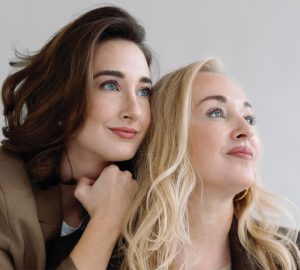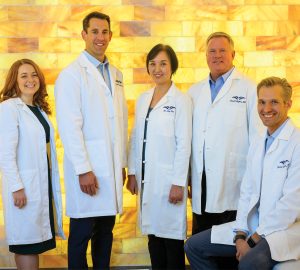It used to be you could always tell when somebody got a nose job—and the doctor who did it. “Back in the early days of rhinoplasty, most surgeons took a strictly cosmetic approach,” explains Dr. Scott Walen of SLUCare, the physicians of Saint Louis University. “They’d do the same cute little shape for everyone. You’d see a face in the crowd and say, ‘Yep, there goes one of Dr. So-and-So’s noses.’ They often had little knowledge of anatomy and physiology. Consequently, the results usually looked fake, and patients often developed breathing problems later on.”
Things have changed, thanks to surgeons like Walen, an assistant professor of otolaryngology who specializes in facial plastic reconstructive surgery at SLU. “Rhinoplasty today is the perfect meeting of anatomy, physiology and art,” he says. “People come to me and my colleagues at SLUCare when they want a good-looking nose that also functions well. We have the aesthetic training to create an attractive nose and the medical expertise to make sure the airway isn’t compromised.”
Walen is known for performing intricate reconstructive surgery following skin cancer removal or traumatic injury to the face and neck. “But I also deal with everyday functional issues, including breathing problems, and I do cosmetic work for people who aren’t happy with the way their nose looks,” he says. Up to 50 percent of his practice involves repairing botched rhinoplasties, he notes. “Sometimes, the previous surgeon failed to remove the bump or correct the breathing problem. Other times, they subtracted too much bone and cartilage, making the nose look pinched and fake, or causing it to collapse like Michael Jackson’s.” Even for a nose that is too large, the emphasis today is on addition, not subtraction: shaping and supporting the nose by creating structure and scaffolding, Walen explains. “A skilled surgeon can do that without adding bulk.”
A recent patient gave Walen an opportunity to improve form and function. “He’s a 46-year-old guy who has never been able to breathe through his nose, due to a previous injury coupled with inherited nasal characteristics,” Walen says. “He couldn’t sleep through the night without waking up two or three times, gasping for air. He was constantly exhausted.” During a three-hour surgery, Walen repaired the patient’s double deviated septum, an S-shaped obstruction that was blocking both nostrils. He then reduced areas of enlarged tissue within the nose. “For every millimeter you reduce an obstruction, you get four times more air flow,” he explains. He further enhanced air flow by subtly raising the tip of the nose.
The results? “Wow, so this is what it’s like to really breathe!” the patient says. “For years, every day was a struggle. Now I wake up full of energy, ready to engage in life. I feel amazing.” “That’s what we strive for,” Walen says. “We want you to leave our offices with the right nose for your face—and with all your breathing problems solved.”
Photo courtesy of SLUCare
Pictured: After a three-hour surgery, Dr. Scott Walen’s patient can breathe freely for the first time.
[Dr. Scott Walen sees patients at the SLUCare Doctors Office Building, 3660 Vista Av e., Ste. 312. For more information, call 314.977.4440 or visit slucare.edu/rhinoplasty.]








